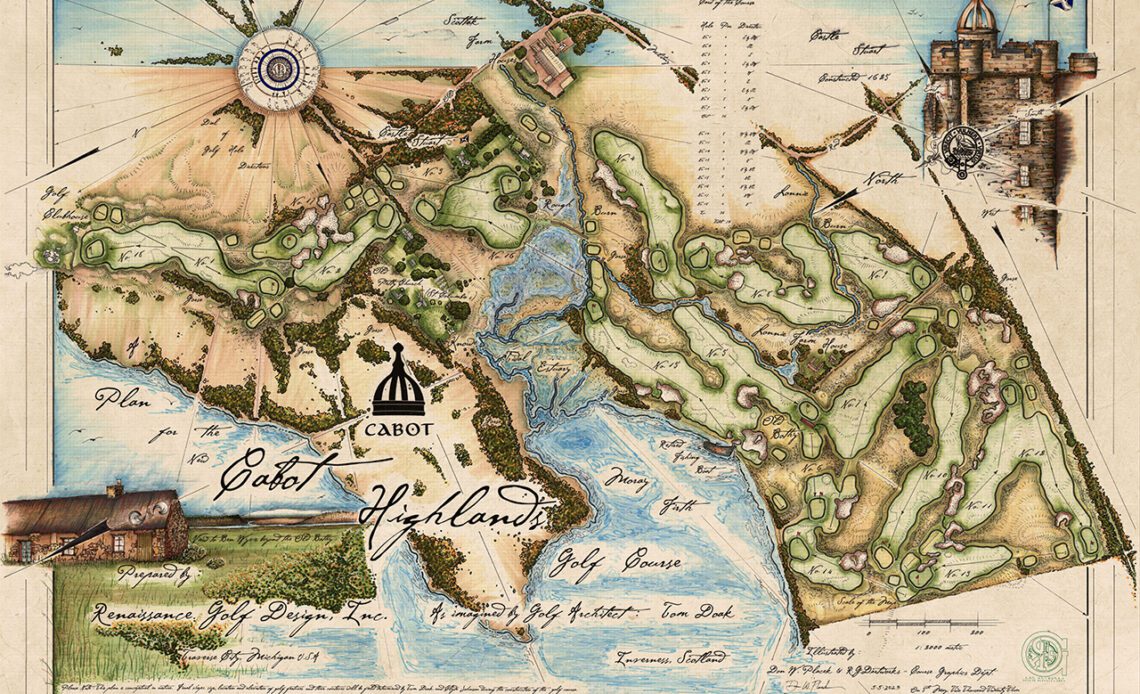A 400-year-old castle. Crisscross fairways. Stunning ocean views reaching from water’s edge to higher and farther back. A giant rolling hill. A front nine loaded with par 4s, then a more conventional back nine with two par 3s and two par 5s. Expect humps, bumps, hollows and fun bounces, all along the northern Scottish coastline not far from Inverness.
Tom Doak’s routing for the yet-to-be-named second course at Cabot Highlands was released by the resort’s Canadian-based ownership group this week. It’s a sure bet the famed American designer utilized his vast knowledge of Scottish golf design – accumulated through years of on-the-ground study of the country’s greatest natural links – to create this much-anticipated layout that should open to preview play in 2024 and fully in 2025.
“At Cabot Highlands, our vision is to create a strategic course that exudes organic beauty and incorporates natural obstacles reminiscent of ancient links from the earliest days of golf,” Doak said in a Cabot Collection media release that previews the routing. “As architects, our greatest joy is to try and sort out the best way to have fun over a raw piece of ground, but the ultimate success is to leave our future golfers a primed canvas for individualized exploration.”
The routing plan for the new Tom Doak-designed course at Cabot Highlands in Scotland shows No. 1 to the left before the layout crosses an estuary and plays to a far point along the coast to the right, then returns to an 18th hole that crisscrosses the first hole. (Courtesy of Cabot)
There’s just one thing: The second course at Cabot Highlands won’t sit on traditional links land. Instead of a totally natural golf site, this property has been farmed for decades, much of it pressed smooth as it rolls past the castle and down that gorgeous hill toward an estuary and the Moray Firth beyond.
That means Doak and his Renaissance Golf Design team have been tasked with creating much of the shot-making drama. On a piece of land that has seen farm tractors instead of greens mowers, they must interject the fun and intricate terrain features that make up the best of Scottish golf.
Doak, of course, knew this when he accepted the job. His stated goal from the beginning: Take what the land offers, don’t overcook anything and, when in doubt, take a drive along the coast for a design refresher at some of the best links courses in the world. It might be St. Andrews to the east, or Royal Dornoch on the…
..
Click Here to Read the Full Original Article at Golfweek…
